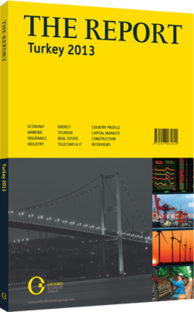OBG talks to Erde M Basci, Governor, Central Bank of the Republic of Turkey (CBRT)

Interview: Erde M Basci
What is the ideal growth rate for Turkey’s economy, and how can the CBRT help achieve this rate?
ERDE M BAŞÇI: There are three factors that determine a country’s growth potential: price stability, financial stability and productivity. Any weakness in these three areas may cause considerable damage to growth. The real costs of inflation are well known and economists estimate a growth cost of 0.25 percentage points for every increase of 10 percentage points in inflation. Likewise, the loss of financial stability has deep and long-term impacts on growth and employment. The 2001 Turkish economic crisis raised the country’s sovereign debt by 30 percentage points, and severely affected growth and employment prospects. Since 2002, Turkey has focused on establishing price stability, financial stability and introducing structural reforms aimed at improving productivity and the growth potential of the country.
How has a low savings rate affected the domestic economy, and how can deposits be encouraged?
BAŞÇI: The expansionary monetary policies adopted in developed countries after the financial crisis had significant implications for developing economies. In Turkey, the availability of low-cost, short-term foreign financing coupled with a low domestic savings rate led to a rapid credit expansion and appreciation pressure on the lira. This has led to an accumulation of macro-financial risks and rising external imbalances since 2010. Since then, the CBRT has taken measures to bring down the current account deficit in the short to medium term, and structural reforms are expected to stabilise the external imbalances in the medium to long term. One such reform is a new private pension scheme that was introduced in January 2013. It is expected to provide a strong incentive to increase the savings rate.
What steps are being taken to extend more low-interest credit facilities to small businesses?
BAŞÇI: In order to lessen the negative impact of the global crisis on the corporate sector, steps were taken to support small and medium-sized enterprises through loans extended by the CBRT via Turk Eximbank. The total credit limit was increased to $4.5bn from $3bn in January 2012 and was further raised to $5.5bn on May 9, 2012. Export credits are extended in Turkish liras and redeemed in foreign currency, thereby increasing the CBRT’s official reserves.
How has deleveraging in Europe affected the ability of Turkish banks to secure new borrowing?
BAŞÇI: Thanks to solid capital cushions, lack of exposure to toxic assets, prudent regulatory oversight and a flexible liquidity management framework, the banking sector was able to support the rapid recovery in the aftermath of the Lehman Brothers crisis. Even as the worries regarding European banks and tightening strains on funding and capital adequacy escalate, Turkish banks remain relatively safe, and despite close financial connections with the European banking sector, Turkish banks can comfortably roll over their external debt in excess of 100%. Turkish banks enjoy a large domestic market, rapid population growth and low penetration, providing good prospects. In addition, the CBRT’s new policy mix has led to the longer maturity of banking system liabilities and supported financial stability via tools used to restrain excessive credit growth. These prudent policies will serve as a buffer in the face of rapidly changing global market conditions.
To what extent are current CBRT policies informed by the lessons of the 2001 crisis?
BAŞÇI: The CBRT has begun implementing a floating exchange rate and gained its independence in 2001, after the financial crisis. The public debt burden fell from 2002 levels of 74% of GDP to 39% of GDP as of 2011. Low fiscal dominance and a sound financial sector helped Turkey to rapidly recover from the global financial crisis of 2008-09 and enabled the CBRT to conduct counter-cyclical policies to ensure price stability and financial stability simultaneously.
You have reached the limit of premium articles you can view for free.
Choose from the options below to purchase print or digital editions of our Reports. You can also purchase a website subscription giving you unlimited access to all of our Reports online for 12 months.
If you have already purchased this Report or have a website subscription, please login to continue.

